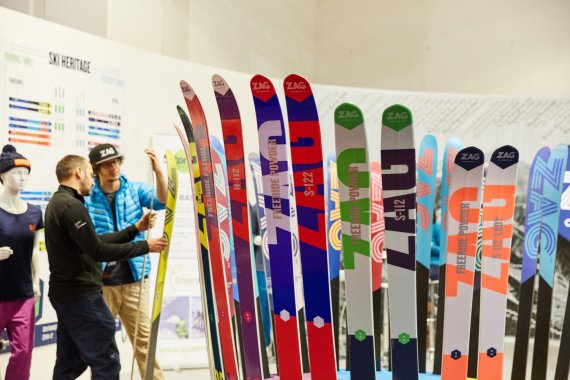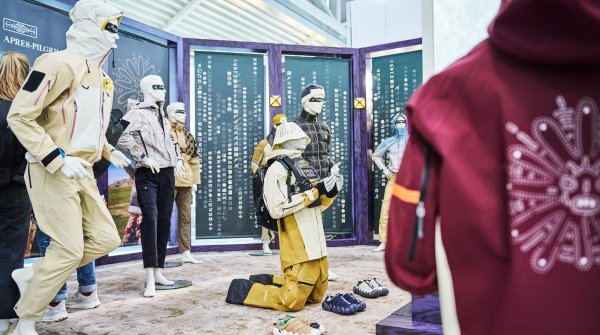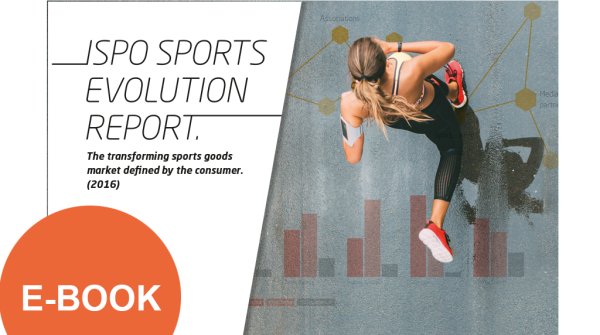
The ISPO Sports Evolution Report study has decoded sporting goods buyers with astonishing precision. The result is "The consumers' perspective on the transforming sports goods market" - in other words, how today's sporting goods buyers think. Among others, the marketing trade medium "Horizont" picked up on this in April.
Shoppers 2017: Inform online, buy offline
"Sports products are items that need a certain 'look and feel,'" says Ottmar Franzen, managing director of the market research company Konzept & Markt. Stationary retail is still the measure of all things for sporting goods, he said.
"For sporting goods, not all information can be conveyed online," says the market researcher. "For example, tennis rackets have to be tried out or at least taken in hand. It's the same with a ski helmet or sports glasses. It's different in other consumer areas."
However, the results of the study also make it clear that sports stores can only be successful today if they play to their strengths: They must offer good advice, good availability of goods and a wide selection. Then they will always be justified. Find out what this in turn means for sports brands in the free webinar on the study.
However, the study, one of the largest surveys of sporting goods shoppers in the German-speaking world, also makes it clear how retailers can meet customer needs even better. To this end, the images of the sports were queried.
The study segmented the large variety of sports and divided them into five areas: Premium, Outdoor, Action & Fun, Health & Fitness and Performance. Between these main segments, however, numerous cross-overs were identified that work across segments. With this knowledge, goods can be better grouped, and consumers can be addressed in a more targeted and tailored manner.
111 sports brands studied
Franzen, who also presented his study at the launch of the new ISPO Academy CONNECT series, then went on to highlight just how heterogeneous the sports market is: "We examined 111 brands. The market of sports companies is incredibly large and confusing." With the help of the study, retailers can recognize the different needs of consumers and the demands on retailers more clearly.
The market researcher therefore has a clear message for all the brands studied: "To be successful, brands have to be real specialists - or cover everything, like Nike and Adidas. There is little room for maneuver in between."

Those who want to know more precisely what this means for their own company have the option of individualizing the study by defining the competitive environment and placing their brand in it. Thanks to the large number of respondents, the study is not only representative of the German-speaking market, but also remains so if subgroups are to be delimited and special markets analyzed.
Trend topic sustainability
The market researchers also analyzed the major trends in the sports industry: Wearables and similar electronic products, as well as the topic of sustainability. "We were able - and this is a major finding of the study from my point of view - to define the meaning of the term sustainability in more detail from the consumer's perspective," says Franzen. "For example, buyers are not so much concerned with environmentally friendly, social production and raw material extraction, but with lasting quality."
Here, the market researcher sees parallels to other studies: "This is just as evident in the sports sector as in other consumer areas. Sustainability means durability."
Four key facts from the study:
- Stationary retail is the basis of sporting goods sales.
- Sports are divided into five image groups: premium, outdoor, action & fun, health & fitness and performance, which are connected via cross-segment cross overs.
- Brands have to decide: True specialist or all-rounder.
- For buyers, sustainability means longevity.
How sports retailers and brands leverage trends
Here, Franzen personally introduces the new sports segmentation (Premium, Outdoor, Action & Fun, Health & Fitness, Performance) and explains what makes successful sports businesses stand out in 2017 and how brands and retailers best leverage the sustainability and electronics trends.
"As an extra goodie, I will use the example of a specific brand to show how it is positioned in the market and compared to its competitors, and how it is perceived by consumers," promises the market researcher. So it's worth taking a look at the free webinar.
Video: The future of sports retail?
 Sports BusinessSustainable ideas for store design
Sports BusinessSustainable ideas for store design Sports BusinessSports retail in transition: the future playbook for 2025
Sports BusinessSports retail in transition: the future playbook for 2025
- ISPO awards
- Mountain sports
- Bike
- Design
- Retail
- Fitness
- Health
- ISPO Job Market
- ISPO Munich
- ISPO Shanghai
- Running
- Brands
- Sustainability
- Olympia
- OutDoor
- Promotion
- Sports Business
- ISPO Textrends
- Triathlon
- Water sports
- Winter sports
- eSports
- SportsTech
- OutDoor by ISPO
- Heroes
- Transformation
- Sport Fashion
- Urban Culture
- Challenges of a CEO
- Trade fairs
- Sports
- Find the Balance
- Product reviews
- Newsletter Exclusive Area
- Magazine




